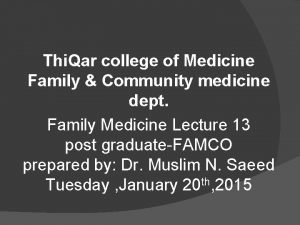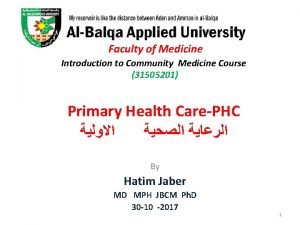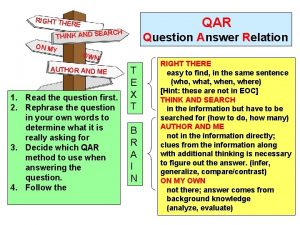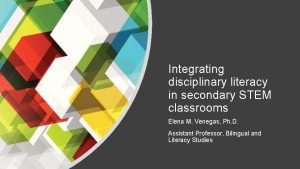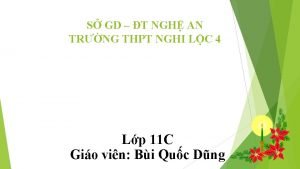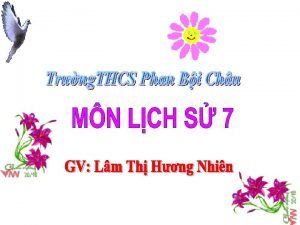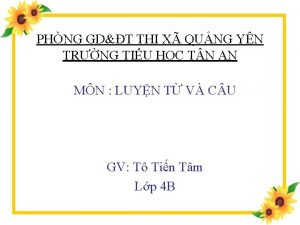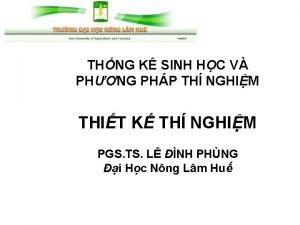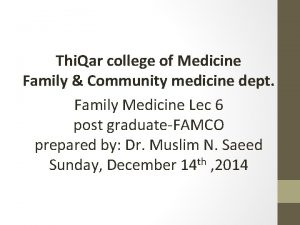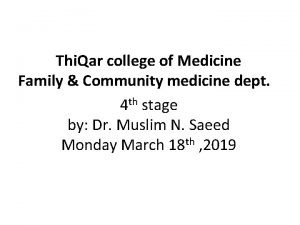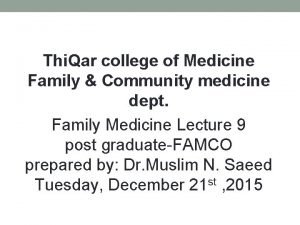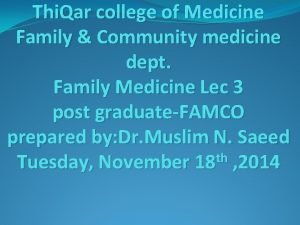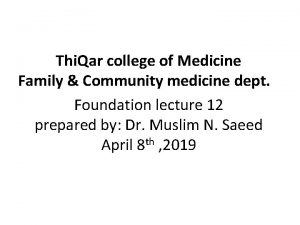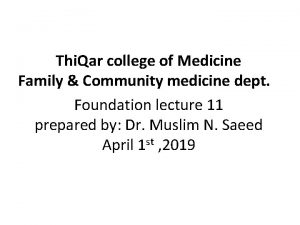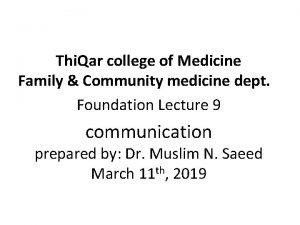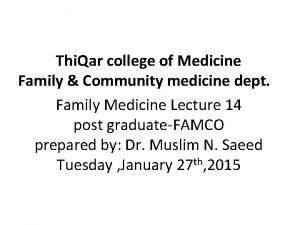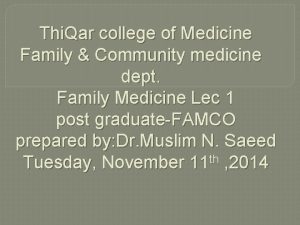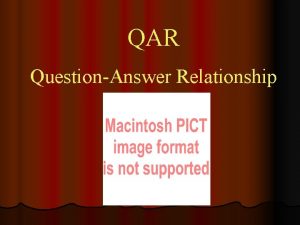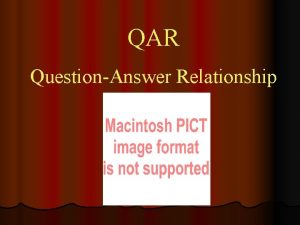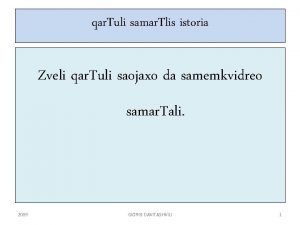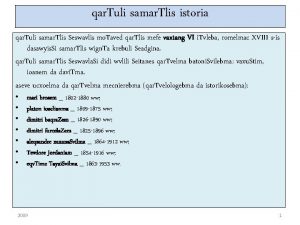Thi Qar college of Medicine Family Community medicine
















- Slides: 16

Thi. Qar college of Medicine Family & Community medicine dept. Family Medicine Lecture 13 post graduate-FAMCO prepared by: Dr. Muslim N. Saeed Tuesday , January 20 th, 2015

Clinical Problem Solving Taking care of patients requires clinical decisionmaking skills. • Most physicians rely on “mindlines” formed by previous knowledge and experience. • A lag exists between the publication of new evidence and its incorporation into clinical practice. • Clinicians should use evidence-based medicine techniques to update their mindlines. The foundation of these mindlines is the tacit knowledge physicians acquire during their early training.

For example, for a child with fever and tonsillar exudates, one physician’s mindline may be to treat with penicillin, and another physician’s mindline may be to obtain a culture and treat if the results are positive for Streptococcus.

To make sound clinical decisions, the clinician must first check his or her mindline. If there are knowledge gaps in the mindline, it can be updated by asking a focused clinical question.

Focusing the Question • Identify the existence of a knowledge gap. • Determine the information source most likely to answer the type of question. • Develop a focused question consisting of four parts: patient’s problem, intervention, comparison intervention, and outcome of interest.

Patient-oriented outcomes are always better than disease-oriented outcomes because they are direct measures rather than secondary markers. For example, a study documenting that a new drug reduces total cholesterol by 20% (secondary marker) is important, but not as persuasive as a study documenting a decrease in cardiovascular death (direct measure).

Finding the Evidence • Usefulness = (Relevance × Validity)/Work • Conflicting evidence is often the result of “medical chatter. ” • POEMs and guidelines require the least amount of work to find relevant and valid results.


the work required to find useful medical information is inversely proportional to its quantity. At the bottom of the pyramid is original research. Although plentiful, much of it represents “medical chatter” among researchers.

Checking the relevance and validity of such studies requires knowledge of statistical methods and study design. It is too time consuming to be useful for answering clinical questions that arise during a patient visit.

At the next level of the pyramid are systematic reviews and meta-analyses. Often, these types of reviews focus on disease-oriented outcomes rather than patient-oriented outcomes, potentially making them less relevant. such as an increase in bone mineral density, may be a secondary marker for fracture risk

At the peak of the pyramid are patientoriented evidence that matters (POEM) reviews. POEMs offer the most useful type of information for answering clinical questions that arise during patient visits. Unfortunately, a POEM does not exist for every clinical question. In these cases the clinician must step down the pyramid until relevant information is found.

Often, minimal or no reliable medical evidence is available to answer a clinical question. In these cases, practicing clinicians must rely on their clinical experience and background medical knowledge—their mindlines.

Incorporating Patient Preferences -Until the 1980 s, medical decision making was physician driven. • There has been a cultural shift from paternalistic to shared decision making. • The degree of shared decision making depends on risk, benefit, and a patient’s preferences. • Decision aids can help patients understand complex probabilities.

Increased patient participation in medical decision making is associated with increased trust, higher patient satisfaction, and greater compliance with treatment, particularly lifestyle changes.

Free EBM web resources : http: //www. medicine. ox. ac. uk/bandolier/index. html http: //www. cochrane. org/ http: //www. guideline. gov/
 Types of family in community medicine
Types of family in community medicine Principles of primary health care
Principles of primary health care Duke medicine grand rounds
Duke medicine grand rounds Qar question types
Qar question types Question and answer relationship
Question and answer relationship Qar questions examples
Qar questions examples Qar test
Qar test Qış baba şeiri
Qış baba şeiri Qar visuals
Qar visuals Qar visuals
Qar visuals Tế bào thụ cảm thị giác
Tế bào thụ cảm thị giác Cấu tạo kính tiềm vọng
Cấu tạo kính tiềm vọng Bé thì chăn nghé chăn trâu
Bé thì chăn nghé chăn trâu Bớt đầu thì bé nhất nhà
Bớt đầu thì bé nhất nhà Mode địa chỉ tức thì là mode
Mode địa chỉ tức thì là mode Nguyễn thị cẩm châu
Nguyễn thị cẩm châu Các kiểu bố trí thí nghiệm 1 nhân tố
Các kiểu bố trí thí nghiệm 1 nhân tố
